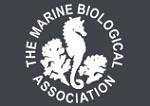APHOTOMARINE
An educational resource dedicated mainly to the photography
and diversity of marine life that can be found in coastal waters
and intertidal areas of Great Britain and Ireland by David Fenwick.

Amathia imbricata
- found on Fucus guiryi 1
Specimen above found on the brown algae Fucus guiryi, Guiry's Wrack, alongside the Harbour Car Park at Penzance Harbour, Penzance, Cornwall. 13.06.15.
Ctenostome bryozoan
Amathia imbricata
- found on a marina pontoon 1
Ctenostome bryozoan
Amathia imbricata
- found on a marina pontoon 2
Ctenostome bryozoan
Amathia imbricata
- with 0.1mm division rule 1
Specimen above found growing on pontoons at Premier Marina, Falmouth, Cornwall. 07.05.15.
Ctenostome bryozoan
Amathia imbricata
- branch 1
Ctenostome bryozoan
Amathia imbricata
- clusters of zooids 1
Ctenostome bryozoan
Amathia imbricata
- cluster of zooids 1
Ctenostome bryozoan
Amathia imbricata
- on Fucus 1
Specimen above found attached to the base of Fucus species, wracks, at Gillian Harbour, St. Anthony-in-Meneage, near Helford, Cornwall. 07.03.15.
Ctenostome bryozoan
Amathia imbricata
- on Ascophyllum nodosum 1
Ctenostome bryozoan
Amathia imbricata
- on Ascophyllum nodosum 2
Ctenostome bryozoan
Amathia imbricata
- on Ascophyllum nodosum 3
Ctenostome bryozoan
Amathia imbricata
- on Ascophyllum nodosum 4
Ctenostome bryozoan
Amathia imbricata
- on Ascophyllum nodosum 5
Specimen above found near base of Egg wrack, Ascophyllum nodosum, on the middleshore at Great Hogus, Marazion, Cornwall. 20.05.14.
Amathia imbricata (Adams, 1798) syn. Bowerbankia imbricata (Adams, 1798)
APHOTOMARINE supports open source data recording and sharing for the benefit of wildlife, recorders, research, science and education. The project recommends the following websites and works with the following bodies and organisations.
The Marine Biological Association or MBA, based in Plymouth, is one of the world’s longest-running societies dedicated to promoting research into our oceans and the life they support. Since 1884 the MBA has been providing a unified, clear, independent voice on behalf of the marine biological community.It has a growing membership in over 40 countries.
The National Biodiversity Network or NBN is a charity that supports open source data sharing and recording supporting conservation, science and education. "Why do recorders need open source?". Simply because it supports the core values of wildlife recording and the free use of records and data over a very wide network that includes partners like the Natural History Museum.
The taxonomy used here is based on that of the following database, which is also used by the MBA, NHM and the NBN.
The World Register of Marine Species or WoRMS.

